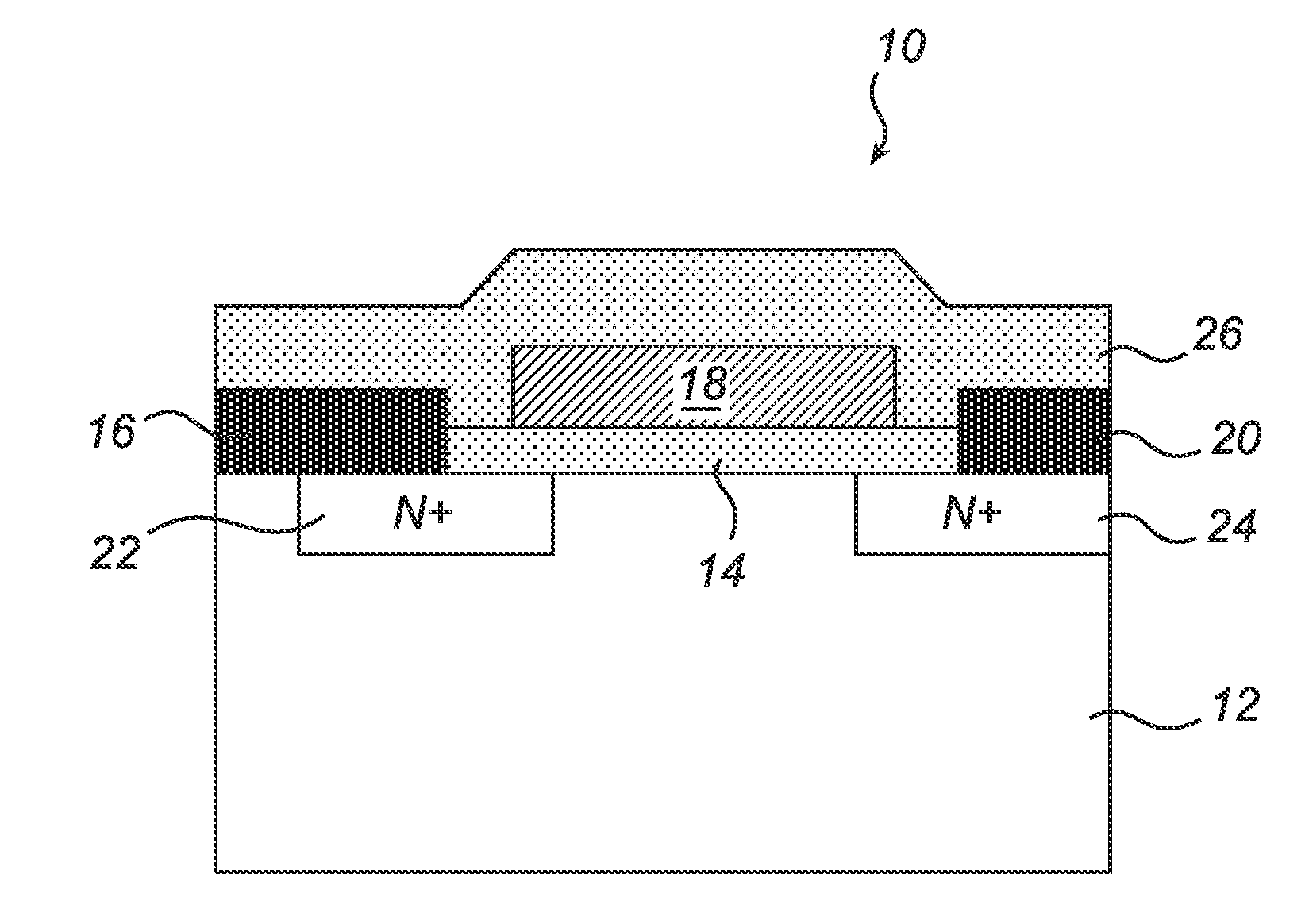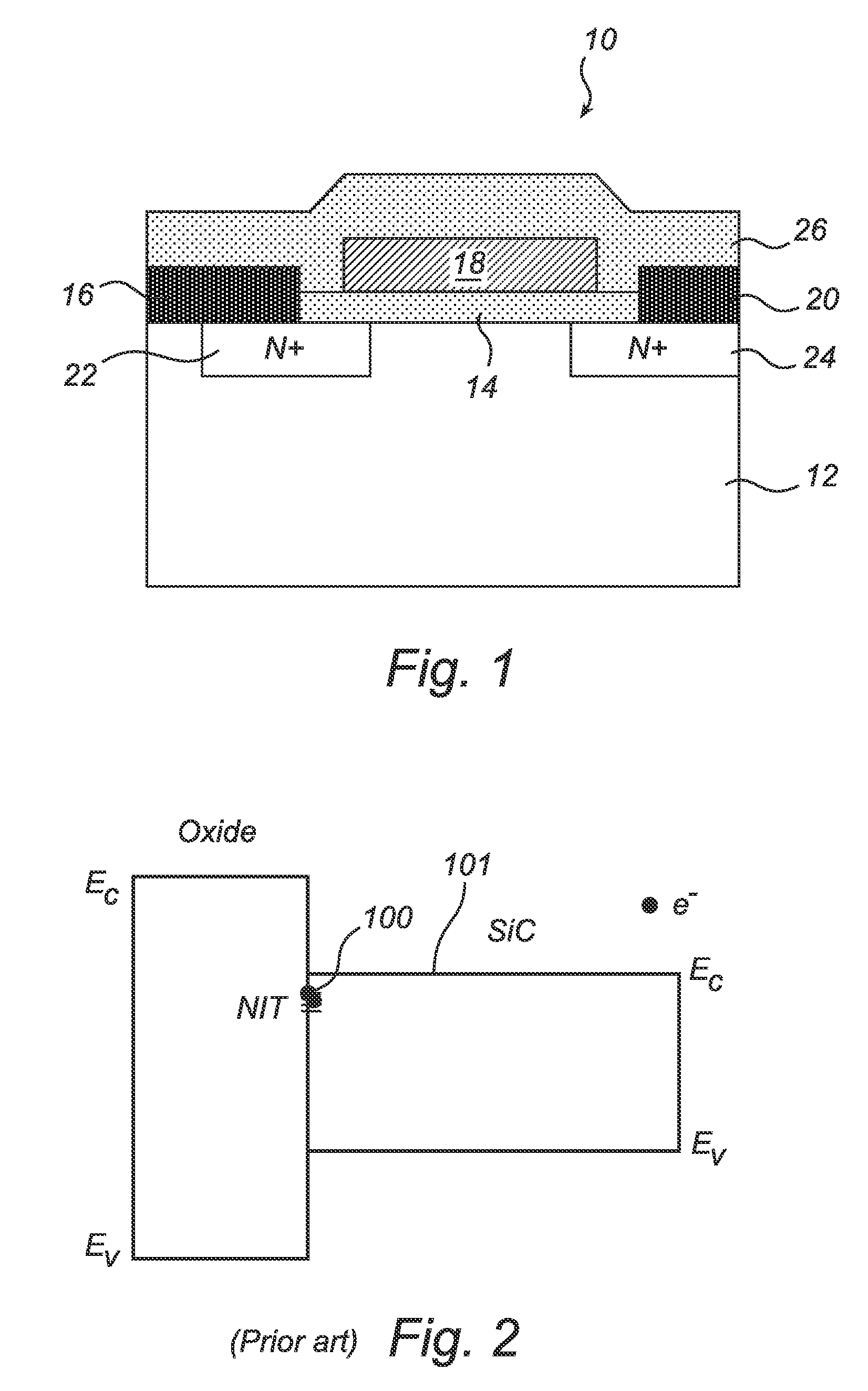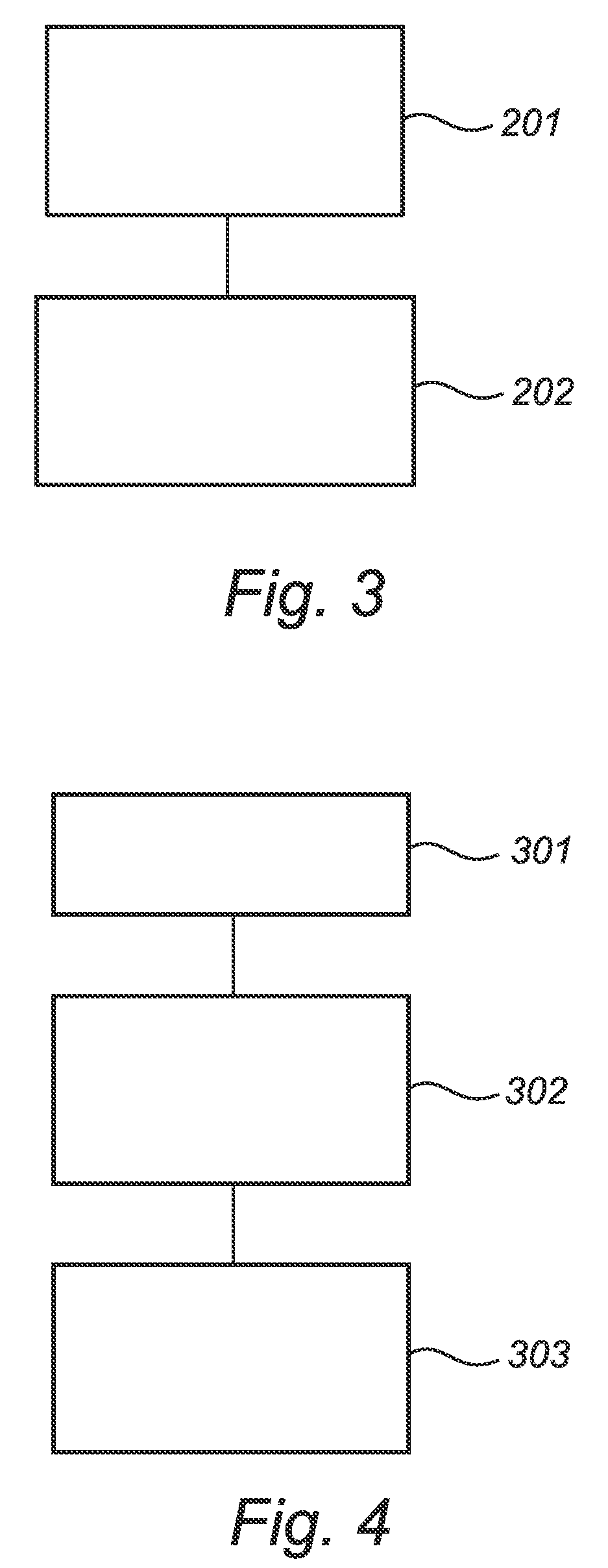Method for improving inversion layer mobility in a silicon carbide mosfet
a technology of metal oxide semiconductors and inversion channels, applied in the direction of semiconductor devices, electrical equipment, basic electric elements, etc., can solve the problems of low threshold voltage, inability to meet the requirements of current or future applications, etc., to achieve the effect of improving the mobility of inversion channels and low threshold voltag
- Summary
- Abstract
- Description
- Claims
- Application Information
AI Technical Summary
Benefits of technology
Problems solved by technology
Method used
Image
Examples
Embodiment Construction
[0041]It is noted that the drawings of the invention are not necessarily to scale. The drawings are merely schematic representations, not intended to portray specific parameters of the invention. The drawings are intended to depict only typical embodiments of the invention, and therefore should not be considered as limiting the scope of the invention. In particular, the method according to the present invention is described with reference to an embodiment, in which an oxidation enhancing agent, here sodium, is introduced during oxidation in order to increase the oxidation rate to a sufficiently high level. It should be noted that it is the oxidation rate as such in combination with the hydrogen passivation that are central to the present invention. Consequently, the present invention is equally applicable to a process involving any other way of accomplishing the desired oxidation rate, such as introduction of other alkali metals, such as potassium or rubidium, introduction of other ...
PUM
| Property | Measurement | Unit |
|---|---|---|
| temperature | aaaaa | aaaaa |
| interface energy | aaaaa | aaaaa |
| temperature | aaaaa | aaaaa |
Abstract
Description
Claims
Application Information
 Login to View More
Login to View More - R&D
- Intellectual Property
- Life Sciences
- Materials
- Tech Scout
- Unparalleled Data Quality
- Higher Quality Content
- 60% Fewer Hallucinations
Browse by: Latest US Patents, China's latest patents, Technical Efficacy Thesaurus, Application Domain, Technology Topic, Popular Technical Reports.
© 2025 PatSnap. All rights reserved.Legal|Privacy policy|Modern Slavery Act Transparency Statement|Sitemap|About US| Contact US: help@patsnap.com



